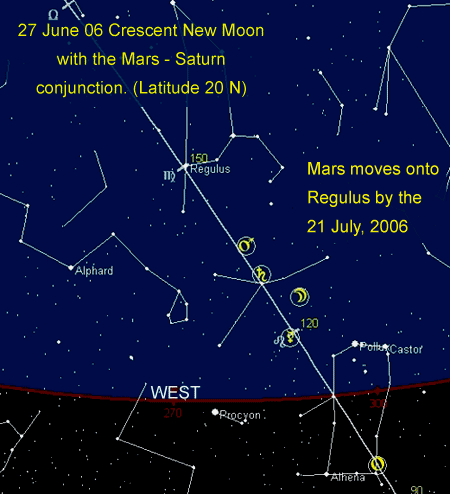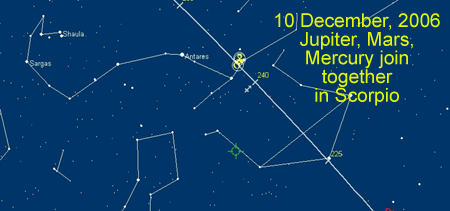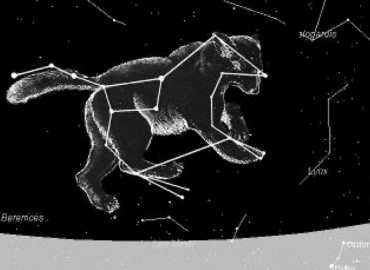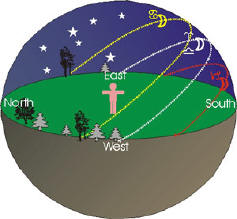Bernadette Brady
June 2006

In 1756 war broke out in Europe, North America, and India. It was an embattlement between France, Austria, Russia, Saxony, Sweden, and (after 1762) Spain, on the one side and Prussia, Great Britain, and Hanover on the other. Later Winston Churchill was to call the Seven Years’ War the real first world war, as all the major powers were involved in the conflict. Although this was not really a visual astrology event, at that time Pluto (in the tropical zodiac sign of Sagittarius) had moved into the most southern part of the constellation Serpentis (an asterism of Ophicuhus) while there was a Saturn –Neptune opposition between Leo and Aquarius (1756 – 57).

Pluto is once again moving to the most southern tip of Serpentis and while in that place, just as in 1756 – 57, Saturn and Neptune will form an opposition (not exact until early September, 2006) in the same two signs. Once again the world is going to “war”. However, this time thankfully it is expressing itself through the emotionally intense FIFA World Cup hosted in Berlin, Germany. Of all the world’s sporting events the World Cup is probably the most passionate battle for a single trophy. England, like many countries around the world, is currently awash with flags and brimming with national fever which would be alarming if it were not all focused into sport.
With the astrological similarity between today and the Seven Years’ War, one can also note that at the beginning of that earlier conflict Germany were at first victorious, while England preformed badly against the French. However, England changed her Prime Minister and went on to gain victories, while Germany. suffered badly, losing Berlin to the Russians and only just managing to pull some credibility out of the fire through luck rather than force. The final outcome of the war, which ended in 1763, was the demise of the French, the emergence of England as a colonial super power and the establishment of Prussia (Germany) as a European force.
Let us see how the replay of this cycle unfolds on the playing fields of Berlin over the next month, for whilst all of this is astrologically interesting, the real question is will the emotional and nationalistic fever of the World Cup be enough to soak up this astrological pattern? Furthermore, in this forthcoming month there will be a Saturn-Mars conjunction. However, as discussed in the April edition of this newsletter, this will not be seen in the upper latitudes (above 25 north ) of the northern hemisphere, as the planets will have already set in the northern hemisphere twilight. However, for the latitudes south of this, the Mars-Saturn conjunction will be visible and also stress by being part of the first sighting of the crescent moon on the 26 or 27 June. This is enough to indicate that a leader within Africa, South America, Indonesia or or Australasia will be challenged. However, the story does not end there.
Once Mars forms a conjunction with Saturn, it rapidly moves forward and joins with the great star of the king – Regulus (see below).

Regulus is a most sensitive star to such events. This is probably the most watched star in Babylonian star lore as any changes to it were considered difficult. The Babylonian priest Nabu-ahhe-eribaj in the 7th century B.C.E. wrote:
If Regulus is dark: the king will become
furious and will lead his notables out [for
killing], but he will return […] and not kill
(them) and will get [……].
And another priest, Nergal-etir wrote:
If a planet comes close to Regulus: the
son [of the king] who [lives] in a city on my
border will make a rebellion against his
father, but [will not seize the throne]; some
son of the king [will come out and seize] the
throne; he will restore [the temples] and es-
tablish sacrifices of the gods; he will provide
jointly for (all) the temples.
So now our story builds. The challenge to the king grows slowly in seriousness. And there is another key event that drops into this unfolding sky story. Within a few days of Mars moving over Regulus, the crown prince, Jupiter, currently so supportive of the king as it has been retrograding amongst the stars of the Scales (a placed linked to the king in Babylonian thinking), turns direct and begins to move away from the Scales into the stars of Scorpio and Antares.
So what do we make of this sky drama? Firstly, we have a Mars-Saturn conjunction, seen to be appear in front of the first sighting of the crescent moon. Then within a few days of this, Mars moves over the Lion Star (Regulus) just as the protector of the King (Jupiter) changes direction and leaves the place of the king.
What these sky components suggest is that in late June a “king” becomes challenged. At first this challenge is not taken seriously. However, what unfolds later in the year is that the support that the “king” expected fails him and, as a result, he is deposed. Indeed by early December Jupiter the Crown Prince is joined by Nergal in Scorpio (see below), a strong indication of a kingly head rolling to the floor.

We will return to this joining of Mars and Jupiter in Scorpio later in the year, but to my eyes working with Visual Astrology one or more of our world leaders are going to change and not necessarily by their own desire. And yes, let us not forget that World Cup to see just how much the Seven Years War is being replayed. England and Germany in the final? Germany being there by a stroke of luck?.. we will have to wait and see.
[1] Hunger, Herman. (1992). Astrological Reports to Assyrian Kings. Helsinki, Finland: Helsinki University Press. pg.25.
[2] id bid pg 137
A note added in July. This article spoke of Mars moving on to Regulus by the 21 July, and then of the unfolding drama of stars, moon, and sky.
As previously quoted in the June issue the Mesopotamian priest, Nergal-etir, warned of this type of event by writing:
If a planet comes close to Regulus: the
son [of the king] who [lives] in a city on my
border will make a rebellion against his
father, but [will not seize the throne]; some
son of the king [will come out and seize] the
throne; he will restore [the temples] and es-
tablish sacrifices of the gods; he will provide
jointly for (all) the temples [1].
Now it has come to pass that on 14 July Israel, provoked by Hezbollah militants, attacked Lebanese airports and since that time the war between Israel and Lebanon has escalated. We all hope for a ceasefire but this is an ancient conflict and, given the mounting sky image we discussed in the June edition, I think there is little hope for many months to come. One of the key points in this sky story is that Jupiter, which is currently standing to one side of the conflict in the stars of the scales (considered a non-aggressive position for Marduk), however later this year (December) Jupiter turns and moves into the stars of Scorpio. Another country, another player will enter the conflict at this time.
The visual astrology of Mesopotamia is suggesting that the war will continue to escalate and that some of the leaders involved in this conflict will be overthrown or deposed.
If we ever thought that Mesopotamian astrological thinking was no longer relevant to the modern world we only have to watch the sky and watch the news.
_____________________________________
[1]. Hunger, Herman. (1992). Astrological Reports to Assyrian Kings. Helsinki, Finland: Helsinki University Press. pg.137




